Debes estar logueado
-
WróćX
-
Componentes
-
-
Category
-
Semiconductores
- Diodos
- Tiristores
-
Módulos con aislamiento eléctrico
- Módulos con aislamiento eléctrico | VISHAY (IR)
- Módulos con aislamiento eléctrico | INFINEON (EUPEC)
- Módulos con aislamiento eléctrico | Semikron
- Módulos con aislamiento eléctrico | POWEREX
- Módulos con aislamiento eléctrico | IXYS
- Módulos con aislamiento eléctrico | POSEICO
- Módulos con aislamiento eléctrico | ABB
- Módulos con aislamiento eléctrico | TECHSEM
- Przejdź do podkategorii
- Rectificadores de puente
-
Transistores
- Transistores | GeneSiC
- Módulos SiC MOSFET | Mitsubishi
- Módulos SiC MOSFET | STARPOWER
- Módulos ABB SiC MOSFET
- Módulos IGBT | MITSUBISHI
- Módulos de transistores | MITSUBISHI
- Módulos MOSFET | MITSUBISHI
- Módulos de transistores | ABB
- Módulos IGBT | POWEREX
- Módulos IGBT | INFINEON (EUPEC)
- Elementos semiconductores de carburo de silicio (SiC)
- Przejdź do podkategorii
- Controladores de puerta
- Bloques de energía
- Przejdź do podkategorii
- Convertidores de corriente y tensión LEM
-
Componentes pasivos (condensadores, resistencias, fusibles, filtros)
- Resistencias
-
Fusibles
- Fusibles miniatura para circuitos electrónicos, serie ABC y AGC
- Fusibles tubulares de acción rápida
- Eslabones fusibles de retardo de tiempo con características GL / GG y AM
- Eslabones fusibles ultrarrápidos
- Fusibles de acción rápida (estándar británico y estadounidense)
- Fusibles de acción rápida (estándar europeo)
- Fusibles de tracción
- Eslabones fusibles de alto voltaje
- Przejdź do podkategorii
-
Condensadores
- Condensadores de motor
- Condensadores electrolíticos
- Condensadores de película
- Condensadores de potencia
- Condensadores para circuitos de CC
- Condensadores de corrección del factor de potencia
- Condensadores de alto voltaje
- Condensadores de calentamiento por inducción
- Condensadores de almacenamiento de energía y pulsos
- Condensadores de ENLACE CC
- Condensadores para circuitos AC/DC
- Przejdź do podkategorii
- Filtros EMI
- Supercondensadores
- Protección contra sobretensiones
- Filtros para detección de emisiones TEMPEST
- Pararrayos
- Przejdź do podkategorii
-
Relés y contactores
- Teoría de relés y contactores
- Relés semiconductores de CA trifásicos
- Relés semiconductores de CA trifásicos
- Reguladores, controles y accesorios
- Arranques suaves y contactores de inversión
- Relés electromecánicos
- Contactores
- Interruptores giratorios
-
Relés semiconductores de CA monofásicos
- Relés semiconductores CA monofásicos, serie 1 | D2425 | D2450
- Relés semiconductores CA monofásicos, series CWA y CWD
- Relés semiconductores CA monofásicos de las series CMRA y CMRD
- Relés semiconductores de CA monofásicos, serie PS
- Relés semiconductores de CA dobles y cuádruples, serie D24 D, TD24 Q, H12D48 D
- Relés de estado sólido monofásicos, serie gn
- Relés semiconductores de ca monofásicos, serie ckr
- Relés AC monofásicos SERIE ERDA Y ERAA para carril DIN
- Relés AC monofásicos para corriente 150A
- Relés dobles de estado sólido integrados con disipador de calor para carril DIN
- Przejdź do podkategorii
- Relés semiconductores CA monofásicos para PCB
- Relés de interfaz
- Przejdź do podkategorii
- Núcleos y otros componentes inductivos
- Radiadores, varistores, protecciones térmicas
- Aficionados
- Aire Acondicionado, Accesorios para Armarios Eléctricos, Neveras
-
Baterías, cargadores, fuentes de alimentación de búfer e inversores
- Baterías, cargadores - descripción teórica
- Baterías de iones de litio. Baterías personalizadas. Sistema de gestión de batería (BMS)
- Pilas
- Cargadores de baterías y accesorios
- Fuente de alimentación de respaldo de UPS y fuentes de alimentación de búfer
- Convertidores y accesorios para fotovoltaica
- Almacen de energia
- Celdas de combustible
- Baterías de iones de litio
- Przejdź do podkategorii
-
Automaticas
- Elevadores Spiralift
- Piezas para drones Futaba
- Finales de carrera, microinterruptores
- Sensores, transductores
- Pirometría
- Contadores, temporizadores, medidores de panel
- Dispositivos de protección industrial
- Señalización luminosa y sonora
- Cámara termográfica
- Pantallas LED
- Botones e interruptores
- Przejdź do podkategorii
-
Cables, alambres Litz, conductos, conexiones flexibles
- alambres
- Pasamuros y acopladores de cables
- cables Litz
-
Cables para aplicaciones especiales
- Los cables de extensión y compensación
- Cables para termopares
- Los cables de conexión a PT czyjnków
- Multicore cables temp. -60 ° C a + 1400 ° C
- cables de media tensión SILICOUL
- ignición alambres
- Los cables calefactores
- temp núcleo único. -60 ° C a + 450 ° C
- conductores de trenes
- El calentamiento de los cables en el Ex
- Przejdź do podkategorii
- camisas
-
trenzas
- trenzas planas
- trenzas ronda
- trenza muy flexible - plana
- trenza muy flexible - Ronda
- Copper cilíndrico trenzado
- Copper protector de la trenza y cilíndrica
- cintas de conexión flexibles
- Trenzas cilíndrico galvanizado y acero inoxidable
- Aislamiento de PVC trenzas de cobre - Temperatura 85 ° C
- aluminio trenzado plano
- Kit de conexión - trenzas y tubos
- Przejdź do podkategorii
- Accesorios para la tracción
- Terminales de cable
- barras flexibles aisladas
- carril flexible multicapa
- sistemas de gestión de cables
- Przejdź do podkategorii
- Zobacz wszystkie kategorie
-
Semiconductores
-
-
- Suppliers
-
Applications
- Accionamientos de CA y CC (inversores)
- Automatización HVAC
- Automatización industrial
- Automatización industrial
- Calentamiento por inducción
- Componentes para atmósferas potencialmente explosivas (EX)
- Dispositivos de protección industrial
- Energy bank
- Equipos para Armarios de Distribución, Control y Telecomunicaciones
- Fuentes de alimentación (UPS) y sistemas rectificadores
- Impresión
- Máquinas de soldar y máquinas de soldar
- Máquinas herramientas CNC
- Máquinas para secar y procesar madera
- Máquinas para termoformado de plásticos
- Medición y regulación de temperatura
- Medición y regulación de temperatura
- Minería, metalurgia y fundación
- Motores y transformadores
- Tracción de tranvía y ferrocarril
-
Instalación
-
-
Inductores
-
-
Dispositivos de inducción
-
-
Servicio
-
- Contact
- Zobacz wszystkie kategorie
¿Cómo pasar un cable por un conducto?

Preparing the Cable and Conduit for Installation
Preparing the cable and conduit is a key step that significantly affects the ease and safety of the entire installation. Proper actions at this stage minimize the risk of cable damage and facilitate pulling wires through the conduit.
Choosing the Right Conduit for the Type of Installation
The selection of the appropriate conduit depends on the type of installation and the environment in which the cable will be routed. For standard electrical installations in buildings, a corrugated PVC conduit PCV is most commonly used, which is flexible, resistant to mechanical damage, and facilitates cable pulling. For outdoor or underground installations, consider using a weather-resistant conduit, which provides additional cable protection.
Checking the Conduit for Obstructions and Condition
Before pulling the cable, ensure that the conduit is clear and free of obstacles. Even a small bend or debris can hinder the cable insertion. If necessary, use compressed air or an inspection camera to check the interior of the conduit and ensure it is fully clear.
Optimizing the Cable End and Pulling Line
The cable end should be properly prepared – ideally slightly rounded or wrapped with electrical tape to facilitate movement through the conduit. If using a pulling line or installation pilot, securely attach the cable to it using a strong but flexible tie that does not increase the cable's diameter.
Marking Cables Before Pulling
Before starting the pull, it is advisable to mark the cables, especially if the installation involves multiple wires in the same conduit. Markings make it easier to identify and connect wires later, minimizing the risk of errors. You can use colored tape or a permanent marker.
Basic Techniques for Pulling a Cable Through a Conduit
After properly preparing the cable and conduit, the next step is to choose an effective cable pulling method. Depending on the route length, cable type, and installation conditions, different techniques can be applied to make the work easier and reduce the risk of damage.
Using a Fish Tape on Short Sections
Fish tape is a flexible steel or plastic tape that allows you to insert the cable through the conduit on short and medium sections. Simply insert the end of the fish tape into the conduit, then attach the cable to it. By gently pulling, the fish tape guides the cable to the end of the route. This is a simple and very effective method for most residential and office installations.
Using an Installation Pilot and Pulling Line
For more difficult or longer routes, an installation pilot along with a thin pulling line works very well. The pilot is inserted into the conduit, and the cable is then tied to it. Gently pulling the line allows the cable to pass through bends and narrow sections without risk of kinking or damage.
Lubricating the Cable with Specialized Gel or Talc
To reduce friction in the conduit and facilitate cable movement, it is worth using specialized cable pulling gel or talc. The lubricant not only speeds up the work but also protects the cable insulation from mechanical damage.
Teamwork for Increased Efficiency
For longer sections or a larger number of cables, having a second person significantly improves work efficiency. One person feeds the cable into the conduit, while the other gently guides it at the end, controlling tension and direction. This approach minimizes the risk of blockages and cable damage.
Advanced Methods for Pulling in Difficult Conditions
For long, curved routes or hard-to-install sections, standard methods may be insufficient. In such cases, advanced techniques can facilitate cable pulling through the conduit and minimize the risk of damage.
The "Vacuum Method" – Using Suction
The "vacuum method" involves using suction to pull a guiding line through the conduit. One end of the line is placed at a vacuum or blower, depending on the model, allowing the cable to be pulled over longer distances efficiently. This is particularly useful for ceiling or floor installations where access to the conduit is limited.
Pulling the Line with Compressed Air
For very long or curved conduits, the blowing method with compressed air is used. A lightweight guiding line is inserted into the conduit, and compressed air pushes it along the route. Once the line reaches the end, the cable can be securely attached and pulled safely through the entire section.
Gravity Technique with a Weight
The gravity technique works well in vertical or steep sections. A small weight is attached to the guiding line, which falls freely through the conduit under gravity. Once the weight reaches the end of the route, the cable is attached and pulled down or up as needed.
Rod Systems for Long and Curved Routes
For very long routes or conduits with many bends, installation rod systems are used. These consist of flexible, connectable rods that allow the guiding line to be pushed through even dozens of meters of complex conduit. This solution makes the work much easier and more efficient.
Tools and Auxiliary Means to Facilitate Pulling
Besides basic cable pulling techniques, there are various tools and auxiliary aids that significantly facilitate the work, especially in challenging installations.
Auxiliary String and Steel Wire as Improvised Solutions
In emergencies or for short runs, an auxiliary string or thin steel wire can be used to pull the cable through the conduit. The string should be securely attached to the cable end, preferably reinforced with electrical tape to prevent snagging on the conduit edges. Although improvised, this solution is often very effective in difficult conditions.
Electrical Tape for Securing Connections
Electrical tape serves two purposes: it secures the cable ends and connects them to the pulling line or fish tape. This ensures smooth cable movement through the conduit and minimizes the risk of snagging or damaging insulation. It is important that the tape is applied neatly and does not create excessive bulk at the cable end.
Cable Pullers and Other Installation Tools
For professional installations, cable pullers are recommended to facilitate inserting wires into conduits, especially for long or curved routes. Additionally, tools such as flexible guides or stainless steel lines are useful to ensure cable safety and work comfort.
Troubleshooting While Pulling a Cable
While pulling cables through the conduit, various difficulties may arise that hinder or prevent proper installation. Knowing how to identify and resolve them is crucial for efficient work.
Conduit Blockages – Identifying and Removing Obstacles
If a cable is stuck in the conduit and cannot be pulled further, first check whether the cause is a bend, dirt, or pinched insulation. Before attempting to unblock, make sure the installation is disconnected from power. If a guiding line was used, gently move it back and forth while lightly pulling the cable — often this is enough to release the blockage.
Using an Inspection Camera to Locate Problems
In more difficult cases, an inspection camera is useful. It allows you to closely examine the interior of the conduit and locate obstacles or damage, facilitating safe removal of the problem. This avoids unnecessary cable removal or conduit damage.
Replacing a Damaged or Kinked Conduit
If the conduit is severely damaged, cracked, or excessively bent, replacing it is the best solution. Attempting to pull a cable through a damaged conduit can result in insulation tearing or complete cable blockage. Replacing the conduit ensures installation safety and facilitates further work.
Choosing the Right Type of Conduit
Selecting the appropriate conduit is crucial for the safety and durability of the cable installation. Different types of conduits have different properties, so it is worth choosing according to the installation location and type.
Smooth Interior Conduit and Its Advantages
Smooth interior conduit ensures minimal friction during cable pulling, making the work easier and reducing the risk of insulation damage. It is ideal where cables will be frequently moved or when precise cable routing is required over long distances.
Segmented Conduit and Its Applications
Segmented conduit consists of connected sections that can be easily adjusted to the route length. Its segmented construction makes it more flexible, facilitating cable routing through curved and hard-to-reach areas. This solution works well in both residential and industrial buildings.
Underground and Outdoor Conduit – Weather Resistance
For underground or outdoor installations, choose a weather-resistant conduit and UV-resistant type. Such conduits are usually made of materials with increased mechanical strength, providing protection against moisture, damage, and temperature effects.
The Importance of the Correct Conduit Diameter for Cable Safety
The conduit diameter should match the number and diameter of cables. A conduit that is too narrow makes pulling cables difficult and increases the risk of insulation damage, while one that is too wide can allow unnecessary cable movement inside the tube. Choosing the correct diameter is therefore crucial for the safety and durability of the installation.
Alternative and Improvised Methods (DIY)
Professional installation tools are not always available. In such cases, home and improvised cable pulling methods allow installation to be completed efficiently with minimal equipment.
Home Methods for Pulling Cable Without Specialized Tools
For short routes or simple installations, basic household items can be used. A thin string or steel wire can serve as an improvised guiding line. The cable can be attached to the string with electrical tape, creating a smooth, safe end that easily passes through the conduit. This method works for simple, straight routes and helps prevent cable damage.
Twisting Cable Technique as an Assisting Method
In some situations, twisting the cable in the conduit can help. The cable end is slightly twisted around the pulling line or fish tape, reducing friction and facilitating movement through bends. This technique is particularly useful for curved or hard-to-access conduits.
Safety and Good Installation Practices
Safe cable pulling through a conduit is not only about efficiency but also protecting the installation from damage. Following best practices ensures cable durability and installation safety.
How to Avoid Cable and Conduit Damage
To minimize the risk of damage, you should:
-
Choose a conduit with the correct diameter for the number and size of cables.
-
Use lubricants such as cable pulling gel or talc to reduce friction.
-
Carefully prepare cable ends and attachments to the guiding line so that no bulges are created.
-
Avoid excessive pulling – always move the cable gently and evenly.
Maintenance and Inspection After Pulling
After completing the pull, it is worth performing an inspection of the conduit and cables:
-
Check if the cable is damaged or abraded.
-
Inspect the conduit and replace any damaged sections if necessary.
-
Ensure cables are properly arranged and marked to facilitate future maintenance and potential expansion.
Regular inspection and adherence to safety rules help avoid problems during the operation of the electrical installation and ensure long-lasting, safe operation of cables within the conduit.
Productos relacionados
Publicaciones relacionadas
 Thermally conductive materials in power storages
Thermally conductive materials in power storages
 Measuring power and energy in electric circuits
Measuring power and energy in electric circuits
 Wentylatory przemysłowe - rodzaje, właściwości
Wentylatory przemysłowe - rodzaje, właściwości

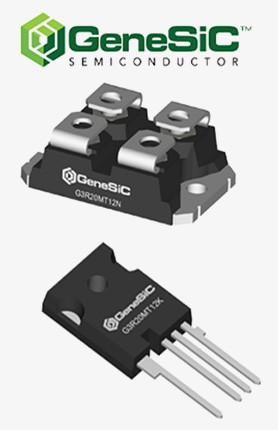
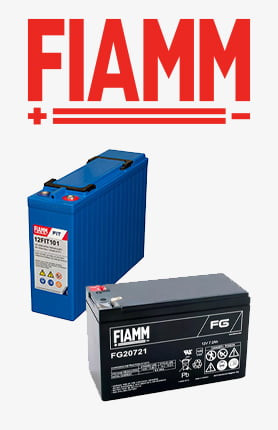
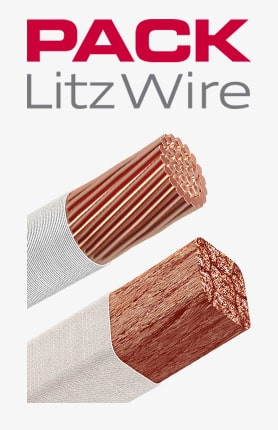
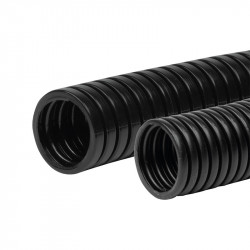
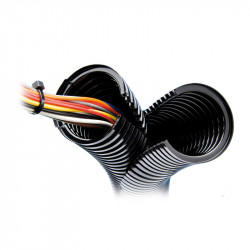
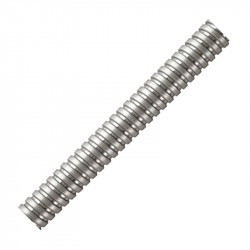
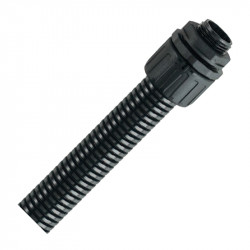
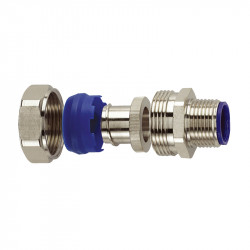
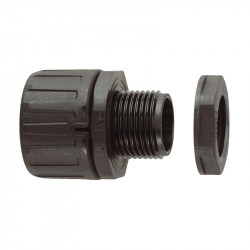

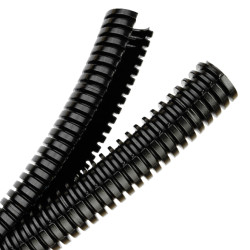


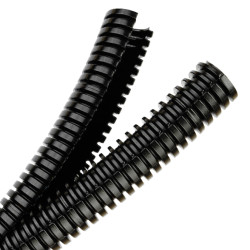
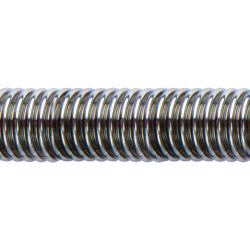
Deja un comentario